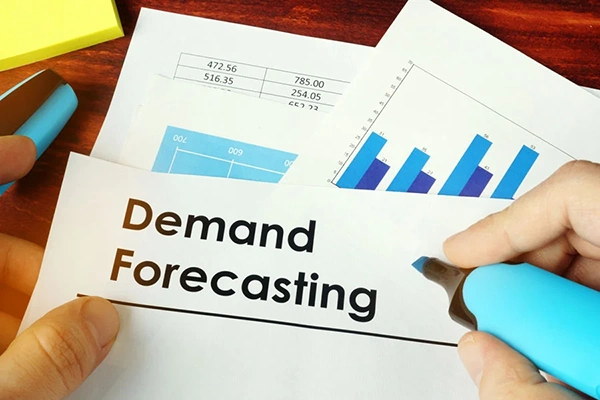Accurate demand forecasting is a groundbreaker for a business, without it, there would be no way to know how much material to purchase to meet the customer’s demand.
In this blog, we have explained the process of demand forecasting and its importance in supply chain success. So let’s understand it!

Demand forecasting is the process that helps supply chain managers and demand planners calculate and estimate a customer’s demand for a product. This is done by taking note of the prior sales, reviews, and other contributing data.
This process helps companies maintain their inventory, predict the sales of their product, make better strategies, and make wise business decisions.
Demand forecasting is a vital component for every product-based business as it tells about the requirements of the raw materials, logistics, purchasing, and distribution.
Simply put, demand forecasting predicts the requirement for the material or service to meet customer demand and future demands.
Now that you’re aware of this, let’s go ahead and understand the reason it is required.
Every business’s sole priority is to satisfy its customer’s needs and demands. And that is when forecasting plays its role in smooth supply chain management. Below are a few benefits of supply chain management:
Thus, demand forecasting helps companies optimize their inventory, increasing turnover, and reducing warehouse costs.
This process might seem simple, but it is more than just looking after the sales reports. It can be fragmented into qualitative and quantitative forecasting that uses multiple resources and data to produce the outcome.
Qualitative forecasting is also called active demand forecasting. It is done with the help of machine learning and artificial intelligence, producing lifecycle and updates, pricing and changes, and intuition.
Quantitative forecasting on the other hand is passive demand forecasting. It relies on existing historical data and sales reports of the past months of each product. This uses mathematical formulations to get the analytics and forecast the needs in the supply chain management.
So these are the two parts that go hand in hand with the demand forecasting process of the business.
There are various techniques involved in forecasting the demand in supply chain management. Let’s understand them here:
These are the techniques used in the sphere of demand forecasting. Moving ahead, let’s understand the factors affecting the process.
Explore how a 3PL company Memphis who can comprehend the factors influencing the customer demand life cycle to forecast demand accurately. Different markets and products can have a wide variety of factors that can be analyzed to improve forecasting accuracy. Let’s take a take at the factors here:
So these are certain factors that might impact your demand forecasting in supply chain management.
These are a few tips you can consider for improving supply chain demand forecasting:
All these tips combined will help you make more accurate predictions, leading to improved forecasting accuracy.
So this was all about demand forecasting in the supply chain. We hope this blog clears your doubts and provides all the necessary information.
Also Read: Bubinga Tips – How To Increase Your Binary Options Win Rate

Thanks for choosing to leave a comment. Please keep in mind that all comments are moderated according to our comment Policy.